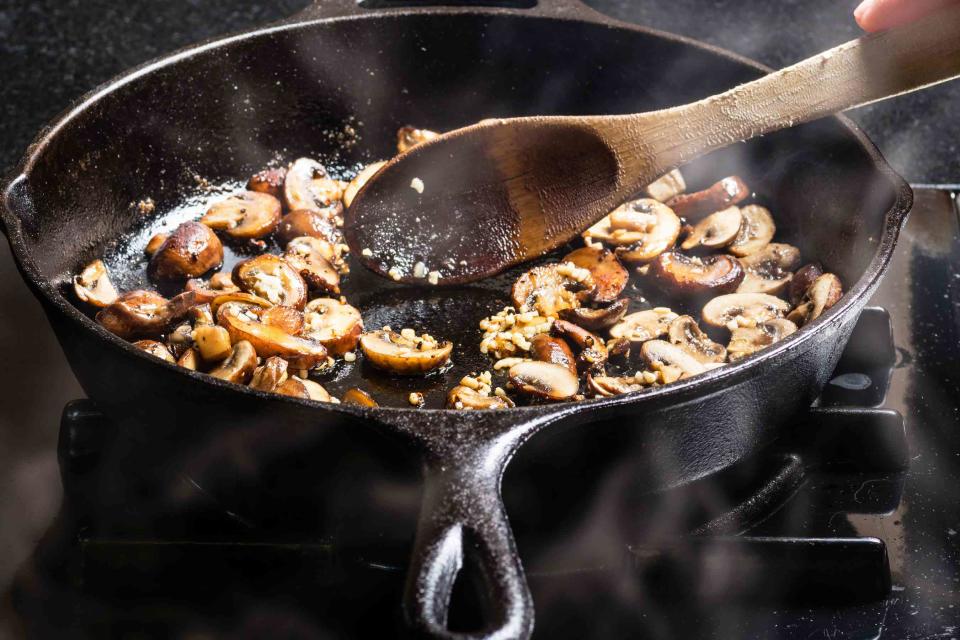Why You Should (Almost) Always Preheat Your Skillet
A hot pan goes a long way towards helping your food sear and rise the way it should.

Getty Images
One of the easiest things you can do in the kitchen to make your cooking better is to preheat your skillet. This simple action can be the difference between golden brown, perfectly tender sautéed mushrooms or oil-laden, pale and flabby fungi.
A thoroughly preheated skillet aids in caramelization of proteins (try it for yourself in Shaking Beef), creates a crisp, delicate crust with creamy middle for potatoes as with this Potato Rosti, and quickly transfers heat to give this Dutch Baby its puffy, pillowy look. But, just to keep you on your toes, we’ll throw in a curveball. Preheating your skillet is key 90% of the time, but there are also a few instances when starting in a cold skillet is beneficial. Don’t be confused: Here are the dos and don’ts of when to preheat.
The benefits of a using a hot skillet
A hot skillet jump-starts caramelization by quickly evaporating any moisture released by the food. This promotes browning (aka the Maillard reaction) rather than the ingredient steaming in its own juices. Results like the golden brown crust on this cornbread not only means added flavor, but also reduces the likelihood of the food sticking to the pan, as it would to a lukewarm skillet. Plus, adding cold food to a hot skillet is inevitably going to drop the temperature of the pan.
A hot skillet also creates oven spring, a term mostly used in bread baking. The quick transfer of heat causes leaveners like baking powder, baking soda, and yeast to spring, literally, into action. The immediate heat activates the leavener for a lofty rise and airy texture for Dutch babies, pancakes, and flatbreads like naan.
How to preheat your skillet
When a recipe says to heat the skillet until smoking, do it. Otherwise, preheating it for about one minute over the heat should be adequate. You should be able to feel the radiant heat of the skillet if you hold your hand three to four inches above the surface. Or, if putting your hands near hot objects isn’t your thing, try flicking a few drops of water into the skillet. The water beads should sizzle and dance around before quickly evaporating.
The exception to the rule: When starting cold is key
Delicate ingredients that are likely to burn, such as thinly sliced garlic, butter, nuts and seeds, are best started in a cold skillet and gently warmed. Fatty ingredients like bacon and chicken thighs also benefit from the slow and incremental increase in temperature, allowing them to render and crisp to golden brown perfection.

